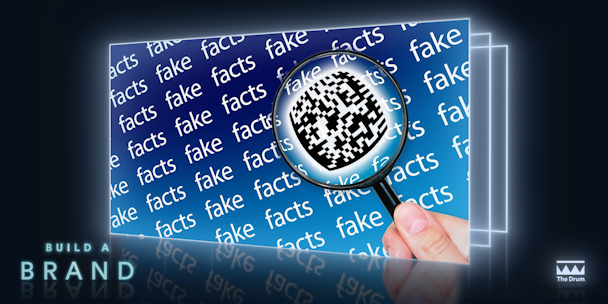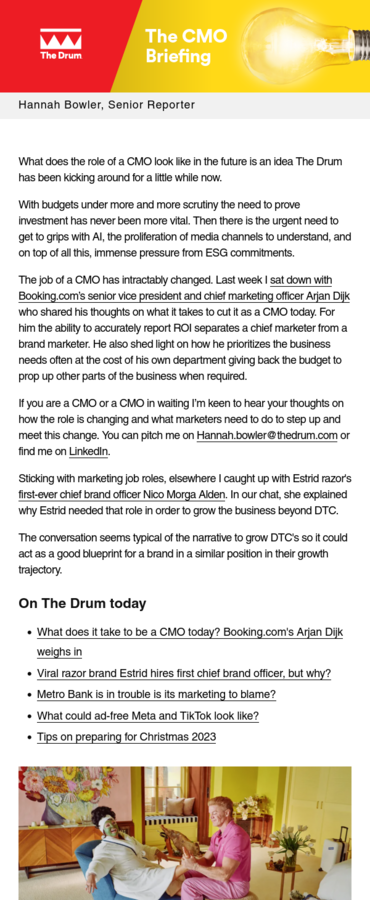Fake. Fake. Fake. How to protect your brand from false information
Fake information poses a burgeoning problem for consumers, brands and everyone in between. Read on to learn how to protect your brand and your customers.

Protecting your brand from fake information / Wendy Alison/Pixabay / Wendy Alison/Pixabay
The dissemination of false information is anything but new, however the rise of social media has allowed false claims to explode into a messy storm of lies and half-truths. Fraud rings proliferate with fake accounts, foreign players attempt to sway thought, far leaning news organizations saturate the airways with unproven facts, and extremists spread unsubstantiated rumors. Not to mention unscrupulous advertisers who falsify product claims. It’s enough to make anyone retreat into a protective bubble of mistrust.
Consumers tend to pay the price when it comes to who and what to believe, particularly concerning products. The ability of individual brands to edit the appearance of their products and purchase fake reviews have deepened the chasm between trust and mistrust. Paid influencers have not helped the situation with photo/video filters and the ability to photoshop themselves into any place or situation on the planet. It’s a matter of who and what to believe and is a choice consumers must take every time they make a purchase.
So, how do brands combat misinformation, build trust, and not fall into the gutter of falsehoods that sometimes perpetuate consumerism?
Advertisement
Practice transparency
To fight the misinformation war, battle lines must first be drawn at a brand’s own doorstep. Consumers, especially younger generations, are demanding transparency from brands and want clear information concerning:
- Sourcing
- Materials
- Business operations
- Brand values
- Sales figures
- Sustainability efforts
- Charity endeavors
- Data usage
Even company mistakes should be included in the actionable items held accountable to consumers. It is the effort of honesty that promotes trust and without consumer trust, brands will fight to stay afloat in the long run. A survey of over 1,000 consumers revealed that 73% of buyers are willing to pay more for products that guarantee total transparency with 86% stating that transparency from businesses is critical. These are huge numbers that should speak loudly to every brand strategy. Transparency pays off.
Advertisement
Be careful with your acquired data
Data concerns are one of the main issues for consumers, and despite newer data laws it still feels very much out of their control. Sadly, only 25% of website users feel companies are being responsible with their personal data. Many companies use third-party vendors to track site users, most of the time without the user’s knowledge. With third-party vendors there is always a risk of data being sold, allowing other parties to create profiles of users which can sometimes lead to coded bots following their every move and targeting them for scams.
To protect your customers’ data, there are several steps you can take:
1. Maintain a rigid data management system
2. Protect customers data within your own organization through limited data access as well as strict password management
3. Set high organizational security standards
4. Collect only essential information from customers, preferably with a highly protected CRM
5. Don’t sell data to third parties
6. Consider using two-factor authentication for users
7. Invest in high-quality integrated malware protection
8. Utilize encryption and blockchain technologies
For long term data protection, it’s imperative that you keep up-to-date security technology as well as maintain regulatory compliance. Showing your customers that you care about their privacy and communicating what methods you use to protect it can go a long way to ensuring trust between both parties.
Suggested newsletters for you
Use your platform to help educate
Providing educational information to consumers helps increase their media literacy and allows them to make well-educated choices based on fact, not fiction. Whether the information you provide is informative or instructive, customers will learn truthful commentary about your company and facts surrounding your brand’s efforts. Several methods of imparting factual info are:
- Detailed sub-pages within your ‘about’ website section
- Tutorials
- Gamification
- Videos such as ‘learn more’ or ‘how to’
- Blog
- Product demonstrations
- Sustainability effort videos
- Employee or management interviews
- Informative, relevant content for social channels
- Hands-on customer experiences
- Expert roundtables
- Consumer guides
- Educational collaborations with influencers
According to a 2020 report by Thought Industries, 96% of businesses believe in the importance of customer training, yet a mere 14% actually believe their customers are sufficiently trained. That is a huge gap that can easily be filled with concentrated efforts by brands to educate their customers. Adequate customer education also contributes to reduced complaints and improved customer loyalty.
How to fight misinformation within your company
It isn’t enough to ‘talk the talk’, but you also must ‘walk the walk’ when it comes to combatting misinformation. Remain diligent in your own use of social channels, lead by example, and encourage your employees to help fight false information. Several ways of doing this are:
- Encourage fact checking
- Don’t share ill-informed facts
- Do your own research
- Set social channel parameters
- Set up real-time brand alerts
- Maintain diligent cyber security protections
- Utilize online monitoring tools
- Establish a communication channel to report any concerns
Truth and trust go hand in hand, and when you set the example within your company it’s easier to combat misleading information on the outside. Encourage communication and openness within your organization and give employees the opportunity to be part of the solution.
How to fix it when you find it
Identifying fake information isn’t difficult especially if it concerns your brand, but to fix the problem it must be tackled head on with transparency, facts, and preparation.
Have a clear strategy in place – When misinformation arises, if you already have a plan in place to tackle the issue it prevents it from blowing up out of your control.
Conduct vigilant sentiment analysis – This helps you identify negative mentions concerning your brand and how consumers are discussing and feeling about you.
Choose your collaborations carefully – Whether you utilize paid influencers, celebrities, athletes, or the like make sure to choose ones with honest reputations who are open to truthful marketing.
Find the source – If you discover misinformation spreading about your brand try to track it down to the original source and take control of the narrative.
Distinguish between misconceptions or misinformation – Often, rumors are based on consumer misconceptions. Control information about your brand by putting truthful information out there first and openly addressing negative perceptions.
Advertisement
Protecting your brand takes effort, especially in this era of mistrust and misinformation, but it isn’t a dead end. Brands don’t have to be at the mercy of public opinion, you can control the narrative by being truthful, transparent, and educating consumers about the facts concerning your brand. As long as your company is part of the solution and not the problem it can continue to thrive in such an information heavy world.
For more information on brand safety sign up for The Drum Plus.
Advertisement

